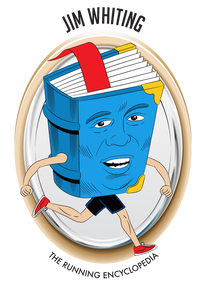 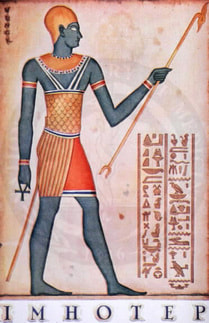 The Renaissance began in Europe in the 15th century and marked the change from the medieval period to the modern world. Towering figures such as Michelangelo, Galileo, and especially Leonardo da Vinci were known as Renaissance men because of their talents and lasting achievements in several important areas of knowledge. They were also accomplished musicians, public speakers, athletes, poets, and so forth. And they were expected to do all this stuff without breaking a sweat. You could give the same title to an ancient Egyptian named Imhotep, who lived about 2600 BCE. He was the vizier, the most important government official, during the reign of Pharaoh Djoser. He served as the high priest of the god Ra and was an expert astronomer. Imhotep designed and oversaw the building of the first major pyramid in Egypt. Located at Saqqara, at the time it was the world’s tallest structure. He innovated the use of stones rather than mud bricks to build it, and it was that added strength that enabled the pyramid to rise so high. He is also credited with the invention of several devices that facilitated the construction. Many people believe that Imhotep, rather than the Greek Hippocrates who lived more than 2,000 years later, is the real “Father of Medicine.” In an era when most physicians relied on magic spells and appeals to the gods, Imhotep prescribed dozens of effective down-to-earth treatments for illnesses and injuries. He is credited with ending a seven-year famine in Egypt. He advised the pharaoh to make sacrifices to Khnum, the god of the annual flooding of the Nile River, and thereby provide desperately needed water to farmers. On a more practical level, he invented an improved irrigation system to carry water to the crops even if the river level was abnormally low. In addition to these accomplishments, an inscription at the base of one of his statues notes that he was “Chief Carpenter, Chief Sculptor, and Maker of Vases in Chief.” In his little spare time, he wrote poetry and dispensed philosophical advice. Imhotep can also boast of two accomplishments that eluded even Leonardo da Vinci. He was deified after his death and worshipped for many centuries, an honor accorded to hardly anyone besides the pharaohs. And today the comic book community gives him the credit for founding S.H.I.E.L.D., the Marvel Comics espionage and crime-fighting agency that became the basis for blockbuster movies such as Iron Man, Thor, and Captain America. 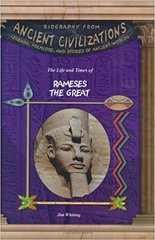 Jim Whiting has written a book on another great Egyptian leader -- Ramses the Great who lived about 1350 years after Imhotep. He fully lived up to the "Great" part of his name. His reign lasted for 67 years, the second longest in Egypt’s 3,000-year history. He had dozens of wives and more than 100 children, outliving many of them. He was a military leader who expanded the borders of his country. That resulted in decades of peace and prosperity for his people. He ordered huge statues of himself to be erected all over Egypt. For more information, click here. MLA 8 Citation
Whiting, Jim. "A Renaissance Man - 4,000 Years before the Renaissance." Nonfiction Minute`, iNK Think Tank, 8 Feb. 2018, www.nonfictionminute.org/the-nonfiction-minute/ A-Renaissance-Man-4,000-Years-Before-the-Renaissance.
0 Comments
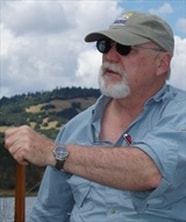 She was 15 pounds below minimum weight for the Navy when she joined, but she had a mighty mind. Admiral Grace Hopper changed the Navy. And your world. She graduated from Vassar College in math and physics then took a doctorate from Yale in math. She joined the Navy in World War II because it needed mathematicians to build the massive machines that computed tables of distance, gun elevation, projectile weight, windage and other factors for precise naval gunnery. Almost immediately she saw something other mathematicians didn’t see: computers could talk. They weren’t just number crunchers to Grace. They could do much, much more if they were given a simple language that would bring the advantages of gigantic computing power and enormous data storage to common uses. While working on the early computers she developed a “compiler,” a kind of translating machine that turned plain-language needs into a set of mathematical commands that retrieved number data from storage banks, performed thousands or millions of math operations, and provided real-world answers. In 1959 she was crucial in devising the first broad-based computer language, COBOL (COmmon Business Oriented Language). It is the root of the many computer operating systems we use today. Then-Captain Grace worked with the National Bureau of Standards to develop self-testing capabilities so a computer could “de-bug” itself. She coined this word when she extracted a fried moth disrupting one of her computers. She led the Navy away from a few giant computers to interconnected, smaller, scattered computers, opening the door to the internet. You are reading plain language words from my small computer on your web-connected small computer. Thank you, Grace. In 1985, at 79, she was promoted to rear admiral of the United States Navy Reserve. She said, “The most important thing I've accomplished, other than building the compiler, is training young people. They come to me, you know, and say, 'Do you think we can do this?' I say, ‘Try it.’ And I back 'em up. They need that. I keep track of them as they get older and I stir 'em up at intervals so they don't forget to take chances.” She died in 1992 at 85. Admiral Grace Hopper received many awards and decorations but the Navy’s most sincere tribute came in 1996 when it named the guided missile cruiser DDG-70, USS Hopper. Naturally, its sailors call their ship “Amazing Grace.”  Jan Adkins successfully tackles the art and science of 10,000 years of bridge building and imparts a lot of historical drama along the way. The process is given fascinating life in this accessible study, wonderfully illustrated by Jan Adkins himself. Ranging from ancient Rome to the present day, from simple log bridges to marvels of industrial technology, and from well-known landmarks to little-known feats of engineering and art, this book gives readers a new appreciation for that most familiar of structures, the bridge. Jan Adkins is a member of iNK's Authors on Call and is available for classroom programs through Field Trip Zoom, a terrific technology that requires only a computer, wifi, and a webcam. Click here to find out more. MLA 8 Citation
Adkins, Jan. "Amazing Grace." Nonfiction Minute, iNK Think Tank, 25 Jan. 2018, www.nonfictionminute.org/the-nonfiction-minute/amazing-grace. 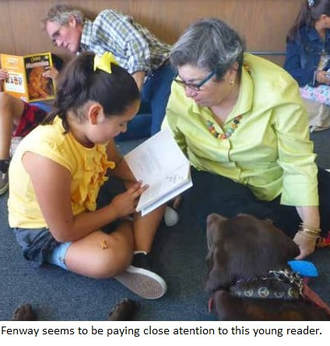 A celebrity has just arrived in Mr. Madison’s classroom at El Verano Elementary School and the 3rd graders are beside themselves. “Here he is!” they exclaim as the visitor walks through the door. This special guest has not come to give a lesson or tell a story. He is neither a star athlete nor a movie star. He doesn’t play an instrument, sing, dance or do magic tricks. His tricks are mostly limited to sit, stay and shake. He is a dog. His name is Fenway Bark. An eight-year old chocolate-colored Labrador retriever, Fenway has been coming to El Verano for six years with his owner, Mara Kahn. He has helped hundreds of children become better readers. Fenway is a literacy dog. “Fenway’s job is to listen while you’re reading,” explains Mara to the class, which is gathered in a circle around her and Fenway. One of the best ways for children to improve their reading is to read aloud, but reading in front of an audience can be scary. What if Chelsea mispronounces a word? Or if Alex loses track of where he is on the page? Will everyone laugh? The fear can discourage some children from reading aloud at all. Solution: read to a totally non-judgmental audience that doesn’t care what you read or how you read it. Read to a dog! When reading to dogs, young readers don’t have to worry about saying “whoof” when they meant to say “which.” With less anxiety and more confidence, young readers increase their reading fluency. That’s why literacy dogs visit hundreds of schools and libraries as reading buddies for children. Vanessa sits cross-legged on the rug in Mr. Madison’s classroom. She gingerly opens Strega Nona by Tomie De Paola. Softly, slowly, she reads about Big Anthony who ignores Strega Nona’s instructions not to touch her magical pasta pot. Fenway sits up and looks at Vanessa. He gazes at the floor. Vanessa keeps reading. The pasta starts flowing. Fenway stretches out. Vanessa reads a little louder, a little faster. Pasta floods the town. Fenway licks Vanessa’s knee. She giggles and goes back to her book. Today, six children got to read to the canine visitor. “It’s so cool to read to a dog,” said one boy who will get his chance next week. He was already thinking about choosing a doggone good book
MLA 8 Citation
Schwartz, David M. "Reading Has Gone to the Dogs." Nonfiction Minute, iNK Think Tank, 20 Dec. 2017, www.nonfictionminute.org/the-nonfiction-minute/Reading-Has-Gone-to-the-Dogs. Accessed 20 Dec. 2017. See note at end. This is now history. Babies born around this time are now adults. A cowardly bully came out of his cave today to trespass on our shining city. Out of the blue he had the nerve to punch out its two front teeth. The pain is excruciating; Bleeding is everywhere. The remaining stumps are grotesque. We've lost our pretty smile. We can't bite a big apple. It's hard to look at mutilation. Dazed, we check for damage. Although choking on thick air, we are very much alive. Our heartbeat is strong. There is no drop in our vital signs. Blood rushes in to replace blood lost. Slowly we discover we can still chew and make a fist and think. Oh yes, we'll make sure this "holy" terror can never return to our playground or our friends.' But how? How do we shadow box a villain who doesn't play by the rules? We see evidence of our noble, generous, and loving spirit. Yet hate destroys within as well as without. Here then is our challenge: We must keep this wound from festering becoming toxic to ourselves. We must imagine the unimaginable to thwart evil before it comes back for more. We must seek justice, not vengeance to preserve our soul. We must trust our leaders who see more than this one tormenter. We must be brave and patient and faithful. As good as we believe ourselves to be, we must become better. Scar tissue is stronger than unscarred. Text copyright © 2001 by Vicki Cobb Reflection: I wrote this poem on September 12, 2001. I am a New Yorker. One grandson, who was 4, was starting school, a few blocks from ground zero. My husband was working in the city. It was a terrible day. I wrote this poem to try and make sense of it for my readers. Do you think it is still true today? Here I am in 2014 on the 43rd floor terrace in lower Manhattan. The brand-new Freedom Tower, on the site of the Twin Towers lost on 9/11, soars behind me. It is 1776 feet tall.
MLA 8 Citation Cobb, Vicki. "September 11, 2001." Nonfiction Minute, iNK Think Tank, 11 Sept. 2017, www.nonfictionminute.org/the-nonfiction-minute/category/cobb-vicki. |
*NEWS
|
For Vicki Cobb's BLOG (nonfiction book reviews, info on education, more), click here: Vicki's Blog
The NCSS-CBC Notable Social Studies Committee is pleased to inform you
that 30 People Who Changed the World has been selected for Notable Social Studies Trade Books for Young People 2018, a cooperative project of the National Council for the Social Studies (NCSS) & the Children’s Book Council
Categories
All
Abolitionists
Adams Janus
Adaptation
Adaptations
Adkins Jan
Advertising
Aerodynamics
Africa
African American History
African Americans
Africa West
Agriculture
Aircraft
Air Pilots
Air Pressure
Air Travel
Albee Sarah
Alchemy
Alligators
Allusion
American History
American Icons
Amphibians
Amundsen Roald
Anatomy
Ancient
Ancient Cultures
Anderson Marian 1897-1993
Animal Behavior
Animal Experimentation
Animal Intelligence
Animals
Animation
Antarctica
Ants
Apache Indians
Apes
April Fool's Day
Architecture
Argument
Arithmetic
Art
Art Deco
Artists
Arts
Asia
Astronauts
Astronomy
Athletes
Atomic Theory
Audubon Societies
Authors
Autobiography
Automobiles
Aviation
Awards
Bacteria
Baseball
Battuta Ibn
Bears
Beatles
Beavers
Bees
Biodegradation
Biography
Biology
Biomes
Biomimicry
Biplanes
Birds
Black Death
Black History
Blindness
Blizzards
Bombs
Bonaparte Napoleon
Boone Daniel
Botany
Brazil
Bridges
Brill Marlene Targ
Brooklyn Bridge
Brown John
Buffaloes
Building Materials
Butterflies
Caesar
Caesar Julius
Caissons
Calculus
Calendars
Cannibal
Capitals
Caravaggio
Carbon Dioxide
Carnivores
Carson Mary Kay
Cartoons & Comics
Carving (Decorative Arts)
Cascade Range
Castaldo Nancy
Castles
Castrovilla Selene
Cathedrals
Cats
Caves
Celts
Cemeteries
Chemistry
Children's Authors
Child Welfare
China
Choctaw Indians
Christmas
Chronometers
Cicadas
Cinco De Mayo
Ciphers
Circle
Citizenship
Civil Rights
Civil Rights Movements
Civil War
Civil War - US
Climate
Climate Change
Clocks And Watches
Clouds
Cobb Vicki
COBOL (Computer Language)
Code And Cipher Stories
Collard III Sneed B.
Collectors And Collecting
Color
Commerce
Communication
Competition
Compilers
Composers
Computers
Congressional Gold Medal
Consitution
Contests
Contraltos
Coolidge Calvin
Cooling
Corms
Corn
Counterfeiters
Covid-19
Crocodiles
Cryptography
Culture
Darwin Charles
Declaration Of Independence
Decomposition
Decompression Sickness
Deep-sea Animals
Deer
De Medici Catherine
Design
Detectives
Dickens Charles
Disasters
Discrimination
Diseases
Disney Walt
DNA
Dogs
Dollar
Dolphins
Douglass Frederick 1818-1895
Droughts
Dr. Suess
Dunphy Madeleine
Ear
Earth
Earthquakes
Ecology
Economics
Ecosystem
Edison Thomas A
Education
Egypt
Eiffel-gustave-18321923
Eiffel-tower
Einstein-albert
Elephants
Elk
Emancipationproclamation
Endangered Species
Endangered-species
Energy
Engineering
England
Englishlanguage-arts
Entomology
Environmental-protection
Environmental-science
Equinox
Erie-canal
Etymology
Europe
European-history
Evolution
Experiments
Explorers
Explosions
Exports
Extinction
Extinction-biology
Eye
Fairs
Fawkes-guy
Federalgovernment
Film
Fires
Fishes
Flight
Floods
Flowers
Flute
Food
Food-chains
Foodpreservation
Foodsupply
Food-supply
Football
Forceandenergy
Force-and-energy
Forensicscienceandmedicine
Forensic Science And Medicine
Fossils
Foundlings
France
Francoprussian-war
Freedom
Freedomofspeech
French-revolution
Friction
Frogs
Frontier
Frontier-and-pioneer-life
Frozenfoods
Fugitiveslaves
Fultonrobert
Galapagos-islands
Galleys
Gametheory
Gaudi-antoni-18521926
Gender
Generals
Genes
Genetics
Geography
Geology
Geometry
Geysers
Ghosts
Giraffe
Glaciers
Glaucoma
Gliders-aeronautics
Global-warming
Gods-goddesses
Gold-mines-and-mining
Government
Grant-ulysses-s
Grasshoppers
Gravity
Great-britain
Great-depression
Greece
Greek-letters
Greenberg Jan
Hair
Halloween
Handel-george-frederic
Harness Cheryl
Harrison-john-16931776
Health-wellness
Hearing
Hearing-aids
Hearst-william-randolph
Henry-iv-king-of-england
Herbivores
Hip Hop
History
History-19th-century
History-france
History-world
Hitler-adolph
Hoaxes
Holidays
Hollihan Kerrie Logan
Homestead-law
Hopper-grace
Horses
Hot Air Balloons
Hot-air-balloons
Housing
Huguenots
Human Body
Hurricanes
Ice
Icebergs
Illustration
Imagery
Imhotep
Imperialism
Indian-code-talkers
Indonesia
Industrialization
Industrial-revolution
Inquisition
Insects
Insulation
Intelligence
Interstatecommerce
Interviewing
Inventions
Inventors
Irrational-numbers
Irrigation
Islands
Jacksonandrew
Jazz
Jeffersonthomas
Jefferson-thomas
Jemisonmae
Jenkins-steve
Jet-stream
Johnsonlyndonb
Jokes
Journalism
Keeling-charles-d
Kennedyjohnf
Kenya
Kidnapping
Kingmartinlutherjr19291968
Kingmartinlutherjr19291968d6528702d6
Kings-and-rulers
Kings Queens
Kings-queens
Koala
Labor
Labor Policy
Lafayette Marie Joseph Paul Yves Roch Gilbert Du Motier Marquis De 17571834
Landscapes
Languages-and-culture
Law-enforcement
Layfayette
Levers
Levinson Cynthia
Lewis And Clark Expedition (1804-1806)
Lewis Edmonia
Liberty
Lift (Aerodynamics)
Light
Lindbergh Charles
Liszt Franz
Literary Devices
Literature
Lizards
Longitude
Louis XIV King Of France
Lumber
Lunar Calendar
Lynching
Macaws
Madison-dolley
Madison-james
Madison-james
Mammals
Maneta-norman
Maneta-norman
Marathon-greece
Marine-biology
Marine-biology
Marines
Marsupials
Martial-arts
Marx-trish
Mass
Massachusetts-maritime-academy
Mass-media
Mastodons
Mathematics
May-day
Mcclafferty-carla-killough
Mcclafferty-carla-killough
Mckinley-william
Measurement
Mechanics
Media-literacy
Media-literacy
Medicine
Memoir
Memorial-day
Metaphor
Meteorology
Mexico
Mickey-mouse
Microscopy
Middle-west
Migration
Military
Miners
Mississippi
Molasses
Monarchy
Monsters
Montgomery
Montgomery-bus-boycott-19551956
Montgomery-heather-l
Monuments
Moon
Moran-thomas
Morsecode
Morsesamuel
Moss-marissa
Moss-marissa
Motion
Motion-pictures
Mummies
Munro-roxie
Munro-roxie
Musclestrength
Museums
Music
Muslims
Mythologygreek
Nanofibers
Nanotechnology
Nathan-amy
Nathan-amy
Nationalfootballleague
Nationalparksandreserves
Nativeamericans
Native-americans
Native-americans
Naturalhistory
Naturalists
Nature
Nauticalcharts
Nauticalinstruments
Navajoindians
Navigation
Navy
Ncaafootball
Nervoussystem
Newdeal19331939
Newman-aline
Newman-aline
Newton-isaac
New-york-city
Nobelprizewinners
Nomads
Nonfictionnarrative
Nutrition
Nylon
Nymphs-insects
Oaths Of Office
Occupations
Ocean
Ocean-liners
Olympics
Omnivores
Optics
Origami
Origin
Orphans
Ottomanempire
Painters
Painting
Paleontology
Pandemic
Paper-airplanes
Parksrosa19132005
Parrots
Passiveresistance
Patent Dorothy Hinshaw
Peerreview
Penguins
Persistence
Personalnarrative
Personification
Pets
Photography
Physics
Pi
Pigeons
Pilots
Pinkertonallan
Pirates
Plague
Plains
Plainsindians
Planets
Plantbreeding
Plants
Plastics
Poaching
Poetry
Poisons
Poland
Police
Political-parties
Pollen
Pollution
Polo-marco
Populism
Portraits
Predation
Predators
Presidentialmedaloffreedom
Presidents
Prey
Prey-predators
Prey-predators
Prime-meridian
Pringle Laurence
Prohibition
Proteins
Protestandsocialmovements
Protestants
Protestsongs
Punishment
Pyramids
Questioning
Radio
Railroad
Rainforests
Rappaport-doreen
Ratio
Reading
Realism
Recipes
Recycling
Refrigerators
Reich-susanna
Religion
Renaissance
Reproduction
Reptiles
Reservoirs
Rheumatoidarthritis
Rhythm-and-blues-music
Rice
Rivers
Roaringtwenties
Roosevelteleanor
Rooseveltfranklind
Roosevelt-franklin-d
Roosevelt-theodore
Running
Russia
Safety
Sanitation
Schwartz David M
Science
Scientificmethod
Scientists
Scottrobert
Sculpture
Sculpturegardens
Sea-level
Seals
Seals-animals
Secretariesofstate
Secretservice
Seeds
Segregation
Segregationineducation
Sensessensation
September11terroristattacks2001
Seuss
Sextant
Shackletonernest
Shawneeindians
Ships
Shortstories
Silkworms
Simple-machines
Singers
Siy Alexandra
Slavery
Smuggling
Snakes
Socialchange
Social-change
Socialjustice
Social-justice
Socialstudies
Social-studies
Social-studies
Sodhouses
Solarsystem
Sound
Southeast-asia
Soybean
Space Travelers
Spain
Speech
Speed
Spiders
Spies
Spiritualssongs
Sports
Sports-history
Sports-science
Spring
Squirrels
Statue-of-liberty
STEM
Storms
Strategy
Sugar
Sumatra
Summer
Superbowl
Surgery
Survival
Swanson-jennifer
Swinburne Stephen R.
Synthetic-drugs
Taiwan
Tardigrada
Tasmania
Tasmanian Devil
Tasmanian-devil
Technology
Tecumsehshawneechief
Telegraph-wireless
Temperature
Tennis
Terrorism
Thomas Peggy
Thompson Laurie Ann
Time
Titanic
Tombs
Tortoises
Towle Sarah
Transcontinental-flights
Transportation
Travel
Trees
Trung Sisters Rebellion
Tundra
Turnips
Turtles
Typhoons
Underground Railroad
Us-environmental-protection-agency
Us History
Us-history
Ushistoryrevolution
Us History Revolution
Us-history-war-of-1812
Us Presidents
Ussupremecourtlandmarkcases
Vacations
Vaccines
Vangoghvincent
Vegetables
Venom
Vietnam
Viruses
Visual-literacy
Volcanoes
Voting-rghts
War
Warne-kate
Warren Andrea
Washington-dc
Washington George
Water
Water-currents
Wax-figures
Weapons
Weather
Weatherford Carole Boston
Whiting Jim
Wildfires
Winds
Windsor-castle
Wolves
Woman In History
Women
Women Airforce Service Pilots
Women-airforce-service-pilots
Womeninhistory
Women In History
Women-in-science
Women's History
Womens-roles-through-history
Wonder
Woodson-carter-godwin-18751950
World-war-i
World War Ii
World-war-ii
Wright Brothers
Writing
Writing-skills
Wwi
Xrays
Yellowstone-national-park
Zaunders Bo
ArchivesMarch 2021
February 2021
January 2021
December 2020
November 2020
October 2020
September 2020
June 2020
May 2020
April 2020
March 2020
February 2020
January 2020
December 2019
October 2019
September 2019
August 2019
July 2019
May 2019
April 2019
March 2019
February 2019
January 2019
December 2018
November 2018
September 2018
June 2018
May 2018
April 2018
March 2018
February 2018
January 2018
December 2017
November 2017
October 2017
September 2017
March 2017
The NONFICTION MINUTE, Authors on Call, and. the iNK Books & Media Store are divisions of iNK THINK TANK INC.
a 501 (c) (3) nonprofit corporation. To return to the iNK Think Tank landing page click the icon or the link below. :
http://inkthinktank.org/
For more information or support, contact thoughts@inkthinktank.org
For Privacy Policy, go to
Privacy Policy
© COPYRIGHT the Nonfiction Minute 2020.
ALL RIGHTS RESERVED.
This site uses cookies to personalize your experience, analyze site usage, and offer tailored promotions. www.youronlinechoices.eu
Remind me later
Archives
March 2023
February 2023
January 2023
December 2022
November 2022
October 2022
September 2022
June 2022
May 2022
April 2022
March 2022
February 2022
January 2022
December 2021
November 2021
September 2021
April 2021
March 2021
February 2021
November 2020
October 2020
September 2020
June 2020
May 2020
April 2020
March 2020
February 2020
January 2020
October 2019
August 2019
July 2019
May 2019
April 2019
December 2018
September 2018
June 2018
May 2018
March 2018
February 2018
January 2018
December 2017
November 2017
October 2017
September 2017


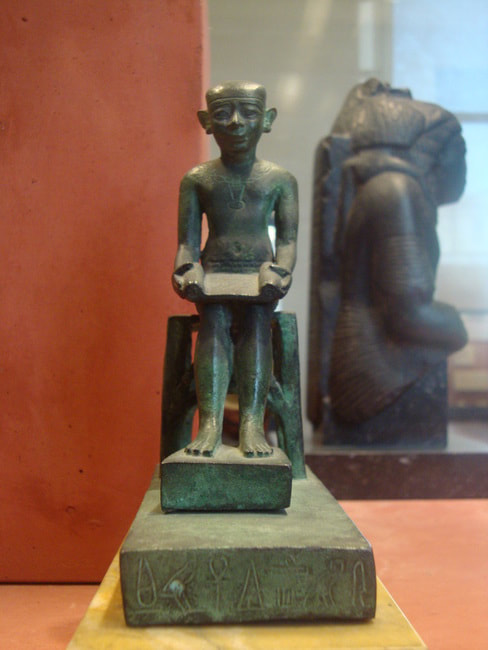



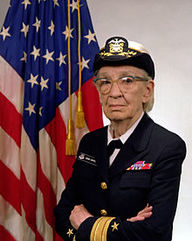




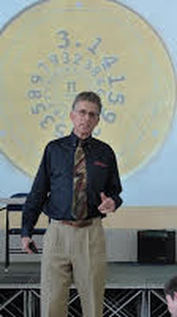










 RSS Feed
RSS Feed
